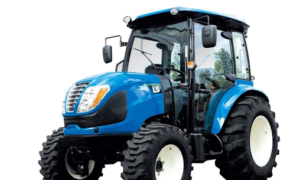India is among the top countries in the world in terms of crop output. Agriculture supports the Indian economy as it is the leading occupation across the country. Not only food grains, but Indian farmers also produce raw materials and items for different industries. A significant part of the population depends on farming to earn a livelihood. You need to understand that India has different types of farming because of changes in holding size, production purpose, the technology used, irrigational facilities and rainfall. Farming involves the cultivation of commercially important crops.
The cropping system is primarily categorized as Zaid, Rabi and Kharif. Zaid crops are cultivated in a short period. Common from April-June, these crops include seasonal vegetables and fruits. Rabi crops are planted from October to March. Examples include peas, mustard and wheat.
On the other hand, Kharif crops are seen around June-October and demand a high amount of water. Examples include cotton, millet, groundnut, maize and rice. Tractors are the primary farming vehicle used by Indian farmers.
All about Farming Types
This section is for you if you do not know about the different farming types. Following is the list of the kind of farming found in India:
- Subsistence farming: This type of farming can be called family farming as it only fulfils the requirements of a farmer’s family. Subsistence farming is known to involve household labour and uses less technology. The farming output of this type of farming is low as most work is performed manually. In addition, these farmers do not have access to irrigation and electricity facilities. Even tractors or mini tractors are uncommon in such farming. Primitive tools are used in scattered and small land holdings. These farmers hugely consume the entire output. There is not much surplus to be sold in the market. They mainly cultivate cereals and crops like sugarcane, vegetables, pulses and oilseeds. The following are the critical features of this farming type:
- Family work
- Small farms
- Low yield
- Manual work
- Traditional farming methods
- Lack of access to irrigation & electricity facilities
Subsistence farming is of two types: Primitive and Intensive. In intensive subsistence farming, farming is practised on a small land. Excess labour and handy tools are employed in this farming. Farmers obtain less output through intensive subsistence farming. Examples of crops include oilseeds, pulses, maize, wheat and rice.
On the other hand, primitive farming employs small land for farming using primitive tools. It relies on environmental conditions like natural soil fertility and monsoon for cultivation. Mostly the crops are grown for feeding families only. Even though there is not much surplus for trade, it develops a greater level of rural independence. Farmers get freedom from the clutches of trading centres and landlords. Subsistence farming helps in the reduction of rural vulnerability while enhancing rural livelihood. In addition, food inflation is reduced through this farming.
- Commercial farming: The main goal of this farming is to sell the produce in the market. Simply, it involves selling the yield in the market to earn money. For this purpose, farmers have to use resources like high-yielding seeds, pesticides, insecticides, chemical fertilizers and irrigation. Examples of such crops include groundnut, sugarcane, jute and cotton. Modern technology is standard in this type of farming. It is mainly because of the need to get higher output. In addition, it employs both unskilled and skilled labour in large numbers. Unlike normal farmers, they are not reliant on natural supplies or rain as they use artificial growth enhancers, machines and advanced methods. States like Maharashtra, Haryana, Punjab and Gujarat practice this kind of farming. The farming sector demands commercial farming as these plantations are also exported to other nations. It gives a massive boost to the agricultural economy of the country.
- Shifting cultivation: This type of farming eliminates forests. For 3-5 years, the cleared forest is developed. This system is helpful in the preservation of soil fertility, which is possible through field or plot rotation. Grain and vegetable crops are produced on cleared land for 2-3 years. Then, slash-and-burn methods are applied to clear the land. Potash gets added to the soil through ash. Examples of crops produced in shifting agriculture include vegetables, millet, maize and dry paddy. In this type of farming, the yield per hectare is low. In addition, it makes use of a higher amount of advanced agricultural inputs such as pesticides, insecticides, chemical fertilizers and high-yielding seeds. The goal is to increase productivity. Also, the level of commercialization of farming is different for different regions. For example, Odisha considers rice a subsistence crop, while Punjab and Haryana consider it a commercial crop. The following are some common traits of shifting cultivation:
- Clears forests by burning and cutting
- Soil not ploughed
- The land is abandoned after 2-3 years.
- Field rotation
- Draught animals are not employed.
- Mixed crops grown
- Intensive Farming: This farming produces a higher output for every unit of land. The cultivator employs huge capital and labour in a small area. Such farming is most common in nations where the land is small while the population is enormous. Intensive farming grows two or three kinds of crops over a field annually. In India, states like Orissa, Maharashtra, Haryana, Madhya Pradesh, Uttar Pradesh and Gujarat practice intensive farming. The following are some common traits of this farming:
- Manual labour
- High-yielding crops
- Natural and chemical fertilizers
- Irrigation
- Pesticides
- Insecticides
- Extensive Farming: This advanced type of farming is practised on big farms. Machines are extensively used in this farming; thus, it is also called mechanical farming. One crop is raised in a year. In addition, capital and labour are less when compared to intensive farming. High production is observed as this kind of farming is practised on huge farms. Temperate regions like Canada and the US practise extensive farming. In India, this farming is not common. However, extensive farming can be found in some states like Haryana, Uttar Pradesh and Punjab.



































